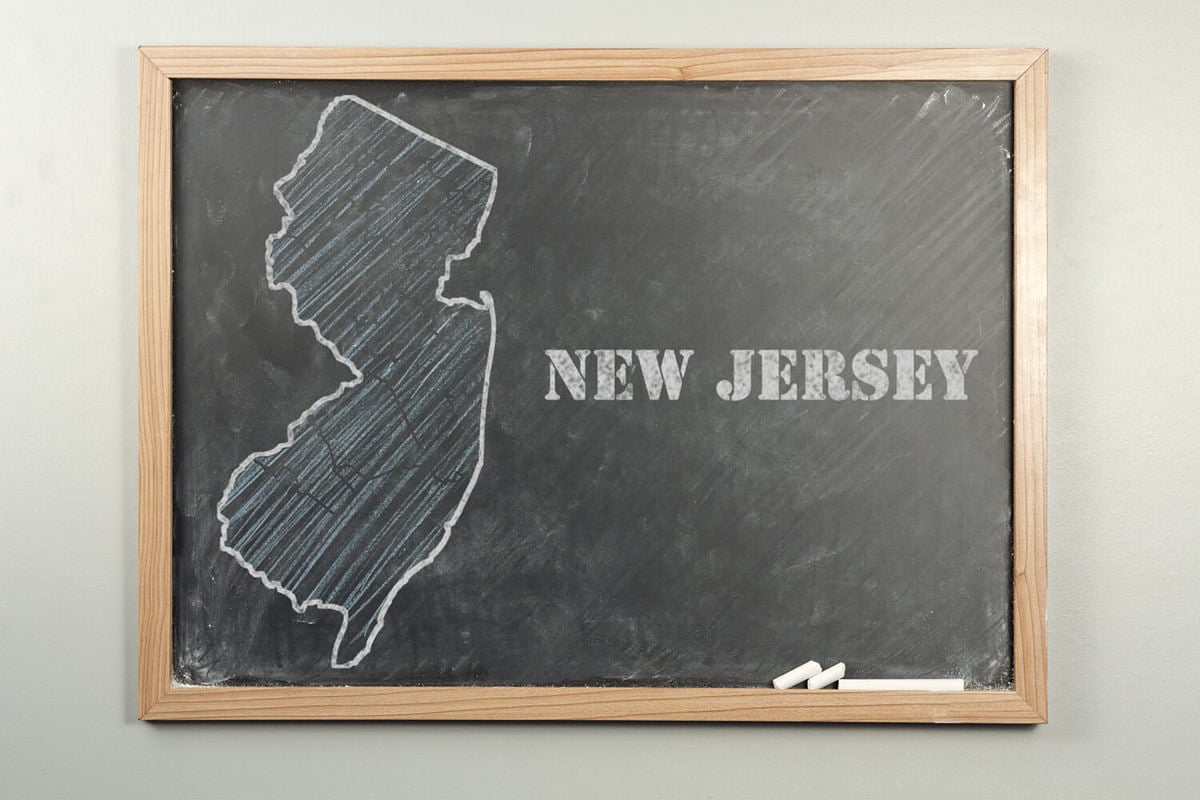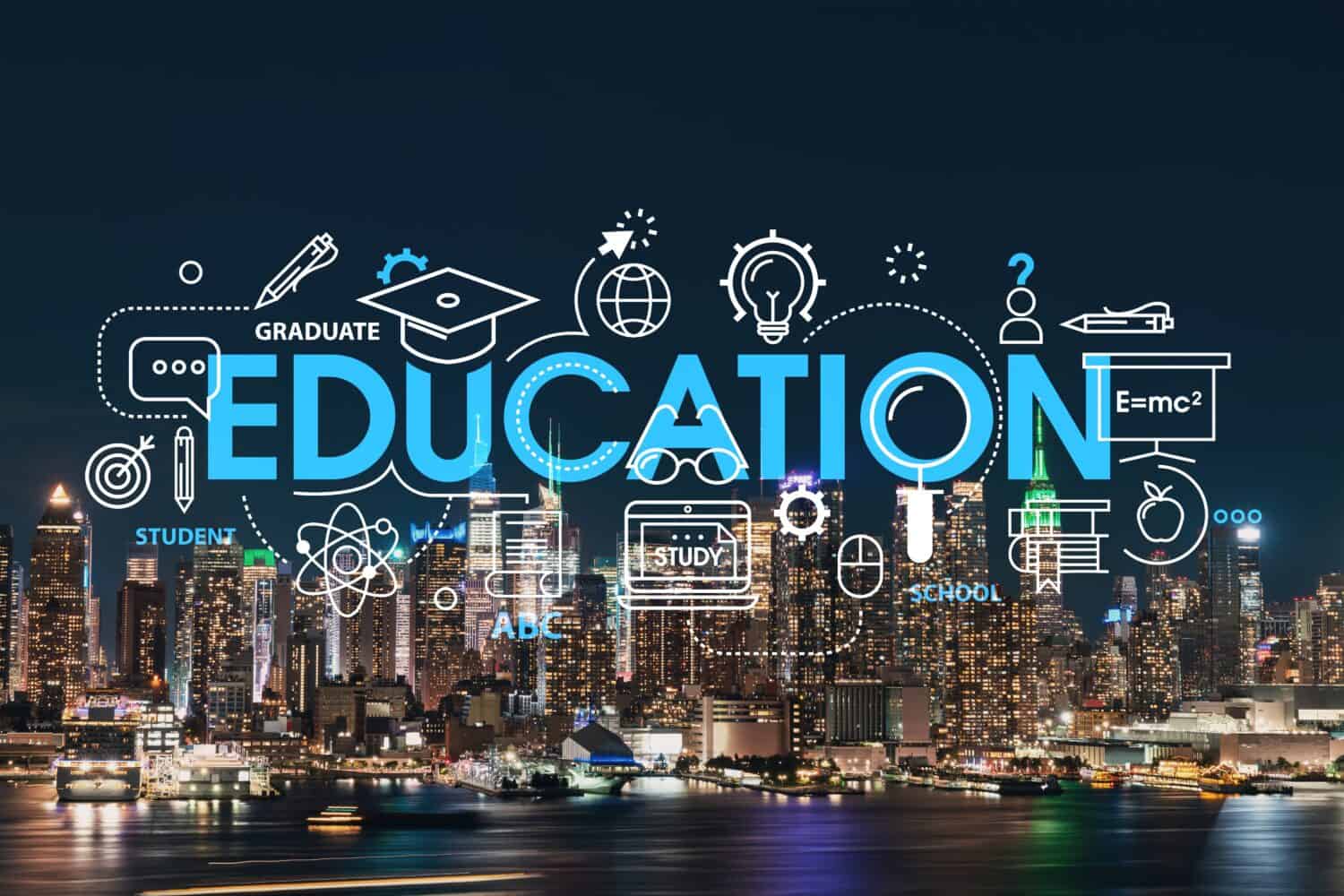New Jersey is a great state known for many things, from its famous boardwalk beaches to its Atlantic City casinos. It’s also a state that's trying to make a difference in the world of education. However, not all schools in New Jersey are created equal. Today, we’ll talk about the worst schools in New Jersey, going from elementary school to college.
These rankings aren’t based on opinion. Instead, the worst schools are chosen based on several metrics, including test scores, student progress, college readiness, equity, diversity, teachers & staff, and more. We’ll also rank several colleges based on their graduation rates. The hope is that these schools can improve so that the future youth will have a good place to learn the important lessons and skills of life.
Worst Schools in New Jersey – Elementary School
After kindergarten, elementary school is one of the first major building blocks in your young child’s education, so it’s essential that they’re in a good school where they can grow and build a solid foundation. Unfortunately, these elementary schools leave some things to be desired.
Gloria M. Sabater Elementary School
Situated within the Vineland Public School System, Gloria M. Sabater Elementary is a medium-sized school with about 849 students. It’s our first entry on the list of the worst schools in New Jersey because of its test scores, student progress, and equity, among other factors. According to GreatSchools.org, the kids in this school are making far less academic progress than kids at other elementary schools. The test scores here have a lot of room for improvement. Currently, math proficiency is at 7%, English proficiency is at 7%, and science proficiency is at under 1%.
As far as equity, there are some issues when it comes to certain students. At this school, test scores for low-income students fall far below the state average for all students. Also, the suspension rates for students with disabilities are higher than the state average at 13% vs. 3%.
Things look pretty good from the teaching standpoint, as 100% of the teachers are fully certified, and 94% of the teachers have more than three years of experience. There’s also a student-to-teacher ratio of 11:1, which means that the kids get fairly personal attention. However, there’s a student-to-counselor ratio of 399:1.
Clayton J. Davenport Elementary School
Found within the Egg Harbor Township School District, the Clayton J Davenport Elementary School also has low marks for student progress, testing, and equity.
Findings show that students here have very low progress on test scores, and if they’re falling behind in elementary school, they could fall behind in all grades going forward. Test scores here fall well below the state average in subjects like English and math. The numbers also show that underserved and low-income students seem to be falling well behind others in the state. Test scores are also lower for low-income students than they are for other students in the state. A great note about the school is that there’s great diversity due to a mix of white, African American, Asian, and Hispanic students.
Like the previous school, the teaching is fairly good here. There’s a 9:1 student-to-teacher ratio, 100% of the teachers are certified, and 96% of the teachers have at least three years of experience. However, there’s a big gap for counselors, as there’s a 386:1 counselor-to-student ratio.
M. Joan Pearson Elementary School
This smaller elementary school is part of the Delanco Township School District, and it has about 268 students, so it’s not a large institution. Like the other schools, this one gets low marks for student progress because it’s plagued by low test scores. Students struggle in important subjects, like math, science, and English.
According to GreatSchools, M. Joan Pearson Elementary School also falls behind because low-income and other underserved student groups are falling behind other students in the state. There’s also an issue here for students with disabilities because 11% of them are absent 15 days or more per year, which is higher than the state average. That can often mean that they’re not getting the support they need. On the bright side, there’s a good mix of diversity with students from various backgrounds, and there’s a 50-50 mix of male and female students.
Yorkship Elementary School
This school in the Camden City Public School District has some issues with testing and equity scores. Students here are generally doing poorly in important subjects like math and English. Also, there’s a shortage of students taking advanced courses like Algebra 1, with less than 1% being involved.
Like the other schools on this list, underserved students, including those from low-income families, seem to be falling far behind other students in the state. There’s also a startling 37% suspension rate for students with disabilities compared to an 18% suspension rate for other students, which means they may not be receiving the necessary support.
The teaching here falls a little short. While 100% of the teachers are certified and there is a fairly good 12:1 student-to-teacher ratio, only 76% of the teachers have more than three years of experience. There’s also a counselor-to-student ratio of 455:1.
Worst Schools in New Jersey – Middle Schools

Students learn a lot in middle school but these schools miss the mark.
©SpeedKingz/Shutterstock.com
It’s also crucial that your student attends a solid middle school so they can continue to learn and improve as they reach adolescence. Students must improve their reading, math, and science skills so they can thrive as they inch closer to adulthood. The schools here fall short.
John L. Costley Middle School
This is one of the lowest-ranking middle schools on GreatSchools.org for several reasons, including test scores, student progress, and equity. Test scores are very low in basic subjects like math, English and science. Plus, although there’s a 100% pass rate in advanced courses like Algebra 1, there’s also a student participation rate of 1%.
As far as equity, there are some disparities when it comes to test scores for different races, including black and Hispanic children. That suggests that some student groups are not getting the support they need. Test scores for low-income students also fall behind the state averages for all other students in the state. Finally, students with disabilities are being suspended from school at 10%, while all other students are experiencing suspension at 3%.
The teacher statistics are fairly good, however. There’s a very decent student-to-teacher ratio of 13:1, meaning the kids get fairly good individualized attention. Also, 100% of the full-time teachers are fully certified, and 94% of them have three or more years of experience.
William Davies Middle School
Next is William Davies Middle School, which is also considered to be one of the worst schools in New Jersey because of equity and student performance. Although this school is doing slightly better than the last entry, they still fall behind when it comes to student progress since the students are doing poorly when compared with other students in the state. Also, like the last school, while there’s a 101% Algebra 1 pass rate, only 23% of students are participating. There’s also unfortunate setbacks for students taking basic classes, like English, math, and science, with test scores falling below the state average.
As far as equity, test scores for low-income students, minorities, and other underserved groups are falling behind other students in the state. White and Asian students are falling in close to expectations, but black and Hispanic students are receiving lower grades, suggesting that they aren’t getting the attention they deserve. There’s also a higher suspension rate here for students with disabilities than for students without disabilities.
Gloucester City Middle School
This middle school, which is part of the Gloucester City Public School District, is improving over time but still has a lot to be desired. When it comes to test scores and student progress, there’s room for improvement. The students here are making far less progress compared to where they were the previous year, and they’re also falling behind their peers. Test scores in subjects like science, math, and English are well below the state average. Plus, although the 29% Algebra 1 participation rate is better than at some other schools, it still could be better.
According to GreatSchools.org, there may be some achievement gaps when it comes to low-income and underserved students as they’re not doing as well as other students in the state. There are also differences in test scores between students of different races, leading experts to believe that everyone isn’t getting the same experience in school. The suspension rate for students with disabilities is also a bit higher than the suspension rate for those without disabilities.
On the bright side, there’s a great 13:1 student-to-teacher ratio, and 100% of the teachers are certified. However, only 90% of the teachers have more than three years of experience, and there’s a counselor-to-teacher ratio of 763:1.
Worst Schools in New Jersey – High Schools
High school is of particular importance for young minds because it may be the last round of schooling that many students will face. So, it’s essential that your kids are in a high school that can prepare them for college or life outside of school. We’ll look at how some of these schools compare when it comes to test scores and college readiness.
Keansburg High School
First on our list is Keansburg High School, which is part of the Keansburg School District. According to GreatSchools.org, this institution gets low marks due to poor test scores, equity, and insufficient college readiness. Currently, this school has a 79% 4-year graduation rate. Of the students who are graduating, only 37% have taken the SAT test in hopes of attending college. The average score for those who did take the test is a 907, which is below the average of 1070, which means that many colleges may not accept it.
There are also low marks when it comes to test scores. Participation in advanced courses like AP math and science is below 5%. Test scores for standard subjects, like English, science, and geometry, are also low.
Other concerns are around equity related to college readiness. Underserved students at this school are falling below other students in the state. Graduation rates for low-income students also fall behind students who aren’t considered low-income. This school also has a higher suspension rate for students with disabilities than the rate for students without disabilities.
As far as teaching statistics are concerned, there’s an excellent student-to-teacher ratio of 8:1, and 100% of the teachers are certified. However, only 82% of teachers have more than three years of experience.
Irvington High School
This school, nestled in the Irvington Board Of Education School District, is another low-rated school in New Jersey. It gets low marks for test scores, college readiness, and equity.
The school has a current 79% 4-year high school graduation rate. However, many of the students who do graduate aren’t getting the proper grades or coursework to excel once they leave college. Even if they want to go to college, the average SAT score coming out of Irvington High School is 811, which is far below the score of 1070 that most colleges consider average. With that said, currently, only about 56% of students show interest in a 2-year college. The percentage is lower for 4-year colleges.
Test scores are another issue here. Many current students are not meeting the proficiency needed to graduate or get into college. Scores for basic classes like English, science, and math are below expectations. Also, participation in advanced classes like AP math and science is also low, with less than 5% of students getting involved. There are also some equity issues at this school with many low-income and underserved students falling behind others, which may signify achievement gaps.
West Side High School
Our final high school is West Side, which is within the Newark Public School District system. Again, we see low marks for college readiness, test scores, and some issues with equity. Like the other high schools, there’s a somewhat decent graduation rate of 77%, but the students who graduate don’t have everything they need to get to the next level. Of the 82% of students who take the SAT test, the average score is 806, which is below the 1070 average. Many students who graduate from West Side are not enthusiastic about going to college, with only 36% pursuing higher learning.
Test scores overall at the school are low, even in basic subjects like English, science, and math. Test scores for science and algebra are 2%. The situation is more dire for underserved and low-income students as they are falling behind other students in the school and state. The graduation rate for black students is 79%, and the graduation rate for Hispanic students is 69%, which could signify that they may not be getting the support that they need.
As far as teaching is concerned, 98% of the teachers have at least three years of experience, but only 75% of the teachers are certified. There’s a decent 12:1 student-to-teacher ratio but a 319:1 counselor-to-student ratio.
Worst Colleges in New Jersey

When you look at some of the lowest graduation rates for New Jersey colleges, it can be eye-opening.
©Ezume Images/Shutterstock.com
When it comes to scoring the worst colleges in a state, one of the best metrics to consider is the graduation rate. Students need to get the necessary support and be encouraged by their professors in order to succeed. If they don’t graduate, the school misses the mark. Here are the schools with the lowest graduation rate, according to CollegeSimply.com.
- Yeshiva Toras Chaim in Lakewood, NJ – 2.5% Graduation Rate
- Mesivta Keser Torah in Belmar, NJ – 5.4% Graduation Rate
- Essex County College in Newark, NJ – 9.1% Graduation Rate
- Hudson County Community College in Jersey City, NJ – 9.3% Graduation Rate
- University of Phoenix Jersey City Campus in Jersey City, NJ – 10.6% Graduation Rate
- Passaic County Community College in Paterson, NJ – 11.5% Graduation Rate
- Camden County College in Blackwood, NJ – 12.9% Graduation Rate
- Mercer County Community College in West Windsor, NJ – 13.6 Graduation Rate
- Union County College in Cranford, NJ – 13% Graduation Rate
Conclusion
This has been your list of the worst schools in New Jersey. Keep in mind that these are just a fraction of the many schools in the state, and a great number of the other institutions are great for young minds. If you live in these areas, then do your research before putting your child into school and give them the best chance for success.
The image featured at the top of this post is ©VideoFlow/Shutterstock.com

